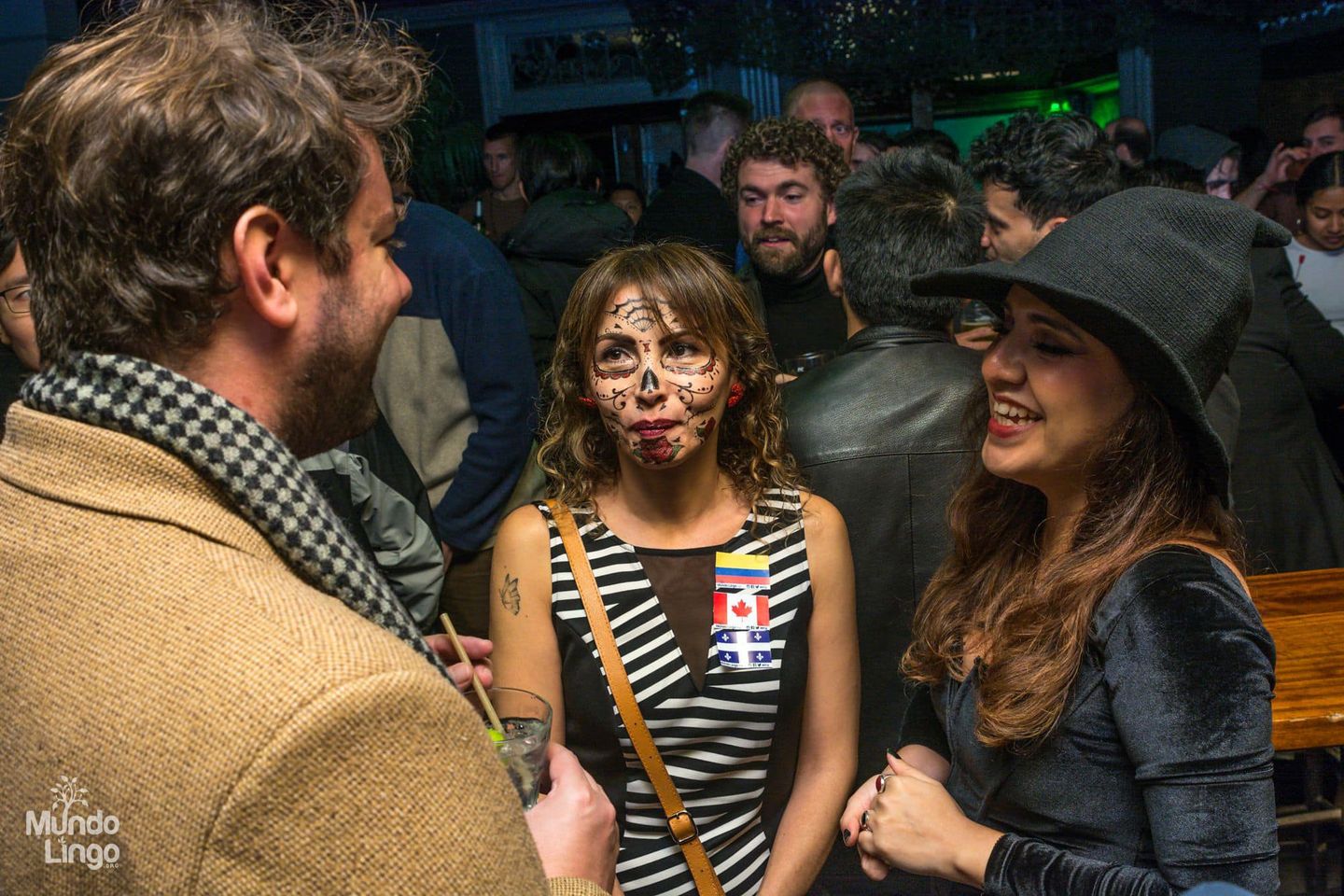Third and fourth-language speakers talk about learning French at the famous Mundo Lingo meetup
Mundo Lingo is an international project that promotes language exchange operating on four continents and thrives to make language learning accessible to all. The project was founded in 2011 by Benji Moreira, and the first event happened in Buenos Aires. Moreira wanted to organize a space where locals could practice foreign languages, and foreigners could practice Spanish; this eventually became a global event where people are welcome to practice any language.
People that attend Mundo Lingo meetups come from all walks of life, old and young, international and local; they all come for one purpose: to discuss the languages they are learning and help people that are learning their own.
Each participant is given sticker flags for the respective languages they speak and want to practice, to signal to other people which languages can be spoken in their interactions.
Several Mundo Lingo enthusiasts spoke about their opinions on Bill 96 which imposes the speaking of French in the workplace among other things.
David Tousseau, an ambassador at Mundo Lingo who speaks French, English, Kinyarwanda, Spanish and Gaelic, says that as a university researcher, “linguistically I am not very involved politically,” and admitted to not really caring about Bill 96. He speaks these languages for patrimonial value, family relations and general interest.
Others like Argentinian Joaquim Marubio, who speaks Spanish, English, and a bit of French, spoke against Bill 96.
“Let me tell you something, Canada is part of a British Commonwealth, it belongs to Our Majesty, so we better speak English. Quebec is part of Canada, people need to speak English, it belongs to Our Majesty!”
Marubio continued to praise the King and said that imposing French was ironic with regards to Quebec’s ties with the Commonwealth.
Anthony Gagné, originally from Quebec, had opposite views to his friend Marubio. He comes to Mundo Lingo to socialize and practice his languages. He speaks French, English, Italian and Portuguese, and is learning Chinese.
“I think it’s a good law, we need to protect the language.” He says Montreal is a perfect example of a place where this law needs to exist. “There are two cultures, Bill 96 creates controversy, it’s taboo to talk about it, but we need to address it.”
He added that “the province of Quebec runs Montreal and that makes for a rather interesting phenomenon,” referring to the recent elections, of a majority government not representing Montreal voters.
He continued, “here it is sure that you will meet people that their French is a third, fourth language, but in everyday life there are not so many, but I really understand linguistically that French is complex, more complex than the other Romance languages”
Two women speaking in Spanish stated that they really appreciated being there, because everyone was so friendly, and it allowed them to practice French without shame. They said that in their workplaces they did not feel comfortable practicing their French because they only speak a bit of it.
Whether it be in language circles or the streets of Montreal, there is a lot of divide on questions of language protection and Bill 96 more specifically. What is certain is Mundo Lingo provides a space where people can share in any language they desire without fear of being shamed for having an accent.
